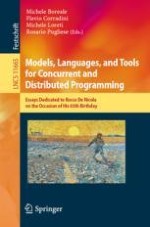2019 | OriginalPaper | Chapter
Autonomous Systems – An Architectural Characterization
Author : Joseph Sifakis
Published in: Models, Languages, and Tools for Concurrent and Distributed Programming
Publisher: Springer International Publishing
Activate our intelligent search to find suitable subject content or patents.
Select sections of text to find matching patents with Artificial Intelligence. powered by
Select sections of text to find additional relevant content using AI-assisted search. powered by
